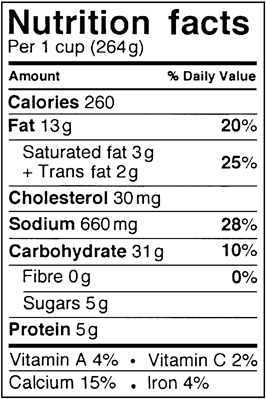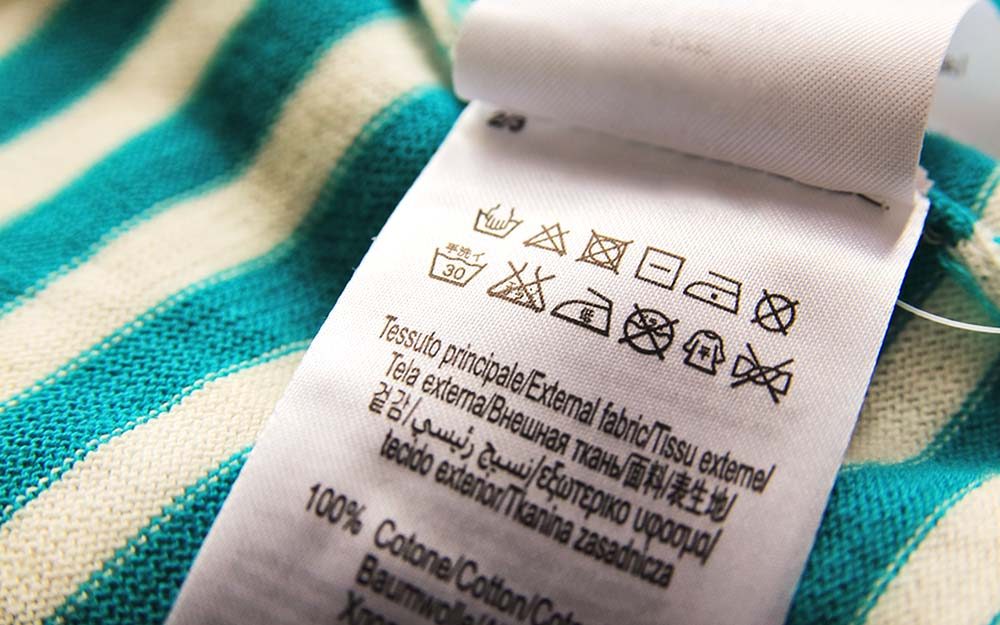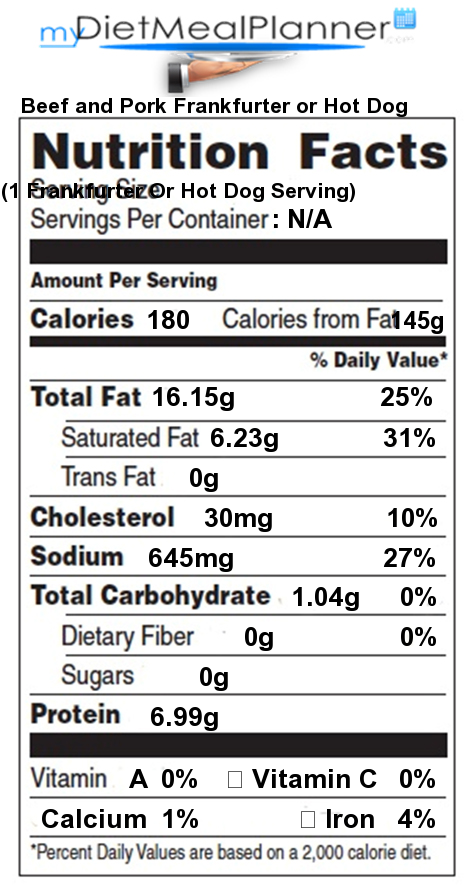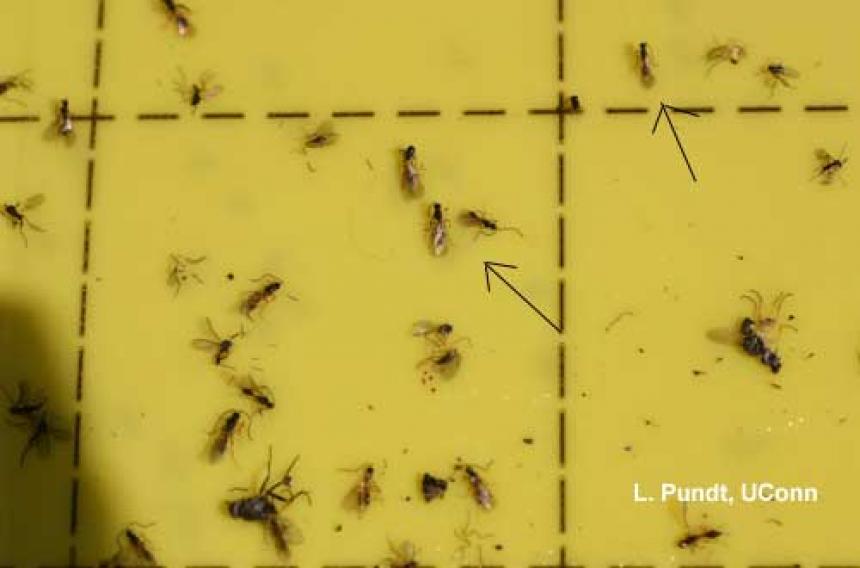43 what information is found on food labels
Food Labeling Basics - Food Quality & Safety The name and place of business of the food product's manufacturer, packer, or distributor statement must follow the ingredients statement and may consist of a business name, city, and zip code if the business' street address may be found in a public directory under the business name. Otherwise, the complete address must be found on the label. How to understand food labels - Eat For Health The Nutrition Information Panel on a food label offers the simplest and easiest way to choose foods with less saturated fat, salt (sodium), added sugars and kilojoules, and more fibre. It can also be used to decide how large one serve of a food group choice or discretionary food would be and whether it's worth the kilojoules.
General Information and Resources for Food Labeling - USDA FDA's Food Labeling program develops policy and regulations for dietary supplements, nutrition labeling and food standards, infant formula and medical foods. Also conducts scientific evaluation to support such regulations and related policy development. The New and Improved Nutrition Facts Label-Key Changes

What information is found on food labels
USDA ERS - Food Labeling Food manufacturers provide much information about the attributes of their products, such as comparative prices and taste, convenience, and nutrition. Labels can provide further information to consumers, increase demand for producers' brands, and promote the marketing of new attributes of products. Food labels - Better Health Channel The food label will tell you all sorts of information, including: what the food is manufacturer's details nutrition information ingredients weights and measures of product date marking directions for use and storage country of origin allergens and additives any nutrition and health claims. Food Labels 101: Understanding the Nutrition Facts Label A sodium level of 140 mg or less on the nutrition facts label is considered low sodium. This is an essential number to look for when reading the label. Total Carbohydrates - Fiber and Sugar Foods high in fiber can be beneficial to a healthy diet, as fiber helps manage blood sugar levels and can lower cholesterol.
What information is found on food labels. Food Labels | CDC If you eat the whole thing, you are eating 8 times the amount of calories, carbs, fat, etc., shown on the label. Total Carbohydrate shows you types of carbs in the food, including sugar and fiber. Choose foods with more fiber, vitamins, and minerals. Choose foods with lower calories, saturated fat, sodium, and added sugars. Avoid trans fat. Common Information on Food Labels | Family & Consumer Sciences Extension The Nutrition Facts label gives information about the total number of servings in the package, the size of one serving, number of calories, and nutrients in the food. The label also uses percent Daily Values (DV) which are average levels of nutrients for a person eating 2,000 calories a day. How To Read Food and Beverage Labels | National Institute on Aging Although frozen and canned fruits and vegetables have food labels, fresh varieties often do not. You can find nutrition information for fresh vegetables and fruits on the USDA website. Or you can call the U.S. Department of Agriculture's Food and Nutrition Information Center at 301-504-5414. Understanding percent Daily Value (% DV) Food labels & nutritional information | Raising Children Network protein. fat. carbohydrates. sugars. dietary fibre. sodium. The nutritional information on food labels helps you work out how healthy a food is. But keep in mind that some of the healthiest foods can be unlabelled - fresh fruit and vegetables, wholegrain breads, nuts, lentils, beans, fresh lean meats and fish.
Food Labels (for Teens) - Nemours KidsHealth The information on food labels is based on an average adult diet of 2,000 calories per day. The actual number of calories and nutrients that kids need will depend on their age, weight, gender, and level of physical activity. (For more guidance, check out the USDA's MyPlate .) Fat Total fat shows how much fat is in a single serving of food. What information is on a food label? | - From Hunger To Hope A column of information on the nutrition facts label called "percent Daily Value" indicates what percentage of the daily recommended nutrients the product delivers, based on a 2,000-calorie diet. total fat, saturated fat, trans fat, cholesterol, fiber, and other nutrients information size of a serving Also, what exactly is on a food label? Information Required on a Food Label: What to Know Every food and beverage manufacturer faces regulations for their food labels. The information required on a food label is fairly straightforward. You might already have it there but you need to be sure it's properly positioned. Here are a few guidelines to follow when putting the finishing touches on your food label design. First, Some ... The Importance of Reading the Food Label and Nutritional Facts The Importance of Reading Food Labels This information does two things: The Basics of Reading a Nutrition Label 1. Serving Size 2. Calories per Serving 3. Percent Daily Values 4. Nutrient Contents 5. Vitamins & Minerals 6. Ingredient List Putting it All Together Reading food labels makes a big difference when it comes to your family's health.
Understanding Food Labels - Nutrition: Science and Everyday Application The serving size of the food is the amount that is customarily eaten at one time, and all of the nutrition information on the label is based on one serving of the food. ... as found in the DRI. 3. Most DVs are based on amounts for people age 4 years through adult, though there are DVs established for infants, toddlers, and pregnant and ... Food Labels | Nutrition - Lumen Learning Food Labels In the United States, the Food and Drug Administration (FDA) requires packaged foods to have a label that helps consumers make educated decisions about the foods they purchase. The label provides caloric, macronutrient, and some micronutrient content of the food. Labels also indicate ingredients and manufacturer information. 10 Things You Didn't Know About Food Labels 6. Natural. The label 'natural' on packaging doesn't have any relation to the product's nutrition or sustainability of production. In the U.S., the term carries meaning when applied to meat, poultry, and eggs: the natural label indicates that no artificial colors or ingredients have been added. Food labelling - Food and nutrition - NHS inform Nutrition labels must display the amount of energy (calories and kilojoules) and the amount of fat, saturated fat, carbohydrates, sugars, proteins and salt (all expressed in grams) present in 100g (or 100 ml) of the food. In addition to the mandatory requirements above, nutrition information may also be expressed per portion provided the number ...
Food Labels | Nutrition.gov Food Labels Food labels can help you make healthy choices when buying food in grocery stores or restaurants. Labeling Organic Products USDA, Agricultural Marketing Service, National Organic Program Learn about organic foods, requirements, and how they are labeled. Calories on the Menu HHS, Food and Drug Administration
Understanding Food Labels - Food Ingredient Facts Food labels are required to list all ingredients contained in the food in descending order based on the amount found in the final product. Most food additives are therefore found toward the end of the ingredient list. This indicates they are used in very small amounts in the food, generally less than two percent of the product. ...

Greenhouse & Floriculture: Foliar Nematodes | UMass Center for Agriculture, Food and the Environment
Get the Facts: Know Your Food Label - Health Powered Kids Pass out two to three nutrition facts labels to each young person or group. Ask the youth to take a few minutes to do the following: Locate the Nutrition Facts label for your food item (s). Find the Serving Size and Servings Per Container. Remember: all of the nutrition information on the label is based on one serving of the food.
About food labels - Canada.ca By law, most packaged food must be labelled with: a nutrition facts table, which gives you information on: serving size. calories. nutrients. percent daily values (% DV) an ingredient list, which lists all the ingredients in a food by weight. this begins with the ingredient that weighs the most and ends with the ingredient that weighs the least.
How to Understand and Use the Nutrition Facts Label | FDA Dietary fiber, vitamin D, calcium, iron ad potassium are nutrients on the label that Americans generally do not get the recommended amount of. They are identified as nutrients to get more of....
Understanding Food Labels | The Nutrition Source | Harvard T.H. Chan ... The information on food labels is intended to help consumers become savvy about their food choices. The front, back, and sides of a package are filled with information to inform us what the food contains and to provide guidance in making healthier selections of processed foods.
Reading Food Labels - What You Need to Know The nutrition information is found in the "Nutrition Facts" label. It is found on the side or back of most packaged foods. This label tells you what a serving size is and how many servings are in the package. Other information shown includes the amount of calories, fat, carbohydrate, protein, vitamins and minerals found in the food. ...
What is required on a food label? - USDA A meat and poultry label is required to contain 8 features. These are: the product name, inspection legend and est. number, handling statement, net weight statement, ingredients statement, address line, nutrition facts, and safe handling instructions. These requirements are found in the Code of Federal Regulations (9CFR 317.2/381 Subpart N).






Post a Comment for "43 what information is found on food labels"